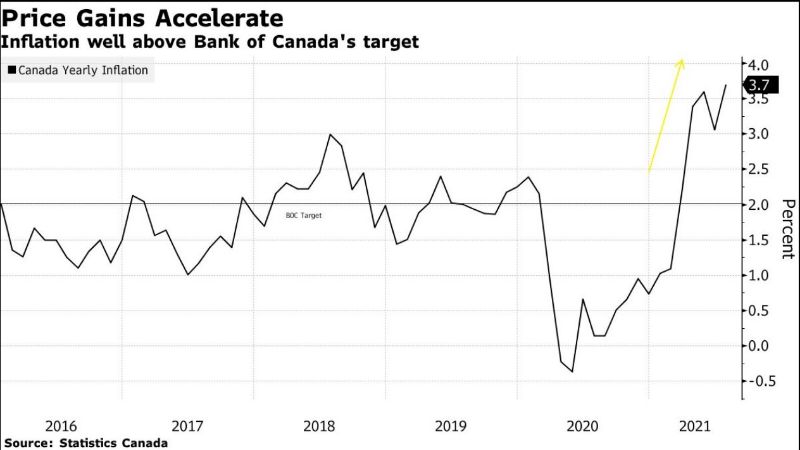
New home prices are climbing higher alongside those of existing residential properties, yet another indication of the kind of frenzied activity that has recently been taking place in Canada’s red-hot housing market.
In announcing Consumer Price Index figures on Wednesday, Statistics Canada (StatsCan) reported the homeowners’ replacement cost index, which is tied to the price of new homes, rose 7% year-over-year in February.
It was the biggest yearly gain since February 2007, StatsCan said, “as higher building costs, low-interest rates, and strong demand for homes with more space continued to push prices for new housing higher.”
The gains for the replacement index have been steadily growing over the past year, from a 0.1% year-over-year increase in February 2020, to 2% last August, to 5.8% in January.
Furthermore, the latest rise for the replacement index follows StatsCan reporting that the price for new housing was up 5.4% in January compared to a year earlier, which was the largest increase since March 2008. It also comes after the Canadian Real Estate Association announced national home sales set another all-time record in February, with the actual average price rising 25% on a year-over-year basis.
Driving the demand are low mortgage rates, increased household savings, and a desire for more room. Although mortgage rates are still at an all time low, they have begun ticking up lately in line with rising bond yields, which might begin to weigh on demand for housing.
Still, StatsCan reported on Wednesday that its mortgage interest cost index dropped 5.4% year-over-year in February, which followed a decline of 4.3% in January, as Canadians locked-in loan rates at historically low levels. StatsCan added that rent prices across Canada were up 0.1% in February.
Falling mortgage interest costs were again more than offset by higher homeowners’ replacement costs, which have been rising alongside home prices. That dynamic should continue as house prices have continued to advance even as interest rates (have) begun to rise.
Mortgage-related price pressures could start to ratchet up again as rates rise, although it may not cause an immediate surge in StatsCan’s index. After all, not everyone is renewing or taking out a mortgage at the exact same time. This is something that doesn’t necessarily turn quickly, but I suspect we’re very close to seeing the lows on this and that it’s likely to head higher in the coming months.
If you are currently in the market for a new home, have a desire to upsize for more room or want to escape to the suburbs, you will need to get pre-approved for a mortgage. A pre-approval is a formal letter from a lender that lays out how much money you can borrow and at what interest rate. It also guarantees the interest rate offered for up to 120 days. This means that you can rest assured that if the rate drops, your Mortgage Broker will adjust your rate for you. You are also protected if the interest rates should rise.
In a competitive real estate market where you and potentially five other people are looking at putting an offer on the same property, that seller is more inclined to go with a buyer who can show proof that they’re pre-approved. And that’s especially true now in our current situation.
Realtors are expecting that their clients will be pre-approved. In our current situation, in a lot of cases, you have to make an appointment to view a prospective property. They might not want to put the time into doing that if you are not already pre-approved.


